Stanimira Vlaeva
NoSQL Data Modeling for Front-end Developers
#1about 3 minutes
Why data modeling matters for front-end developers
Understanding NoSQL data modeling helps improve application performance, developer productivity, and reduces overall costs.
#2about 7 minutes
Understanding document databases and flexible schemas
NoSQL document databases like MongoDB store data in BSON documents grouped into collections with flexible schemas, unlike rigid SQL tables.
#3about 6 minutes
Strategies for modeling one-to-many relationships
Model one-to-many relationships using either embedding to store related data within a single document or referencing to link separate documents via IDs.
#4about 6 minutes
Choosing a strategy based on relationship cardinality
Use embedding for one-to-few relationships and referencing for one-to-zillions relationships to avoid oversized documents and performance issues.
#5about 2 minutes
Modeling standard one-to-many relationships
Decide whether to embed or reference by determining if the related data constitutes a separate logical unit that needs to be queried independently.
#6about 6 minutes
Optimizing queries with the Extended Reference Pattern
Combine referencing with embedding minimal, frequently needed data to optimize critical queries and avoid multiple lookups.
#7about 5 minutes
Managing data duplication and staleness
Embrace necessary data duplication for historical accuracy and manage staleness by using batch updates with MongoDB Change Streams.
#8about 9 minutes
Key principles and resources for data modeling
Effective data modeling is driven by application use cases, relationship cardinality, and the identification of critical queries.
Related jobs
Jobs that call for the skills explored in this talk.
Matching moments
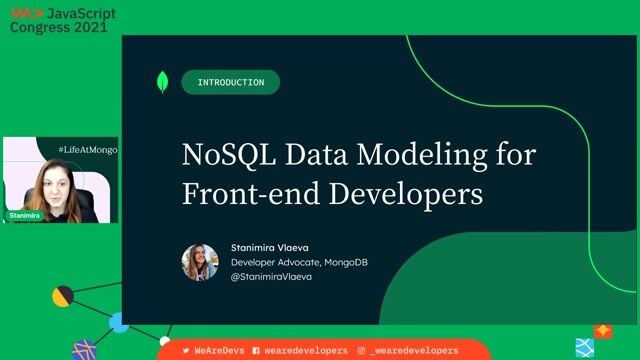
00:04 MIN
Why data modeling matters for front-end developers
NoSQL Data Modeling for Front-end Developers
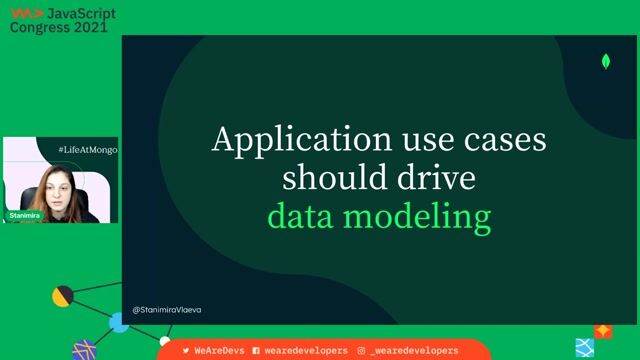
36:04 MIN
Core principles for successful NoSQL data modeling
NoSQL Data Modeling for Front-end Developers
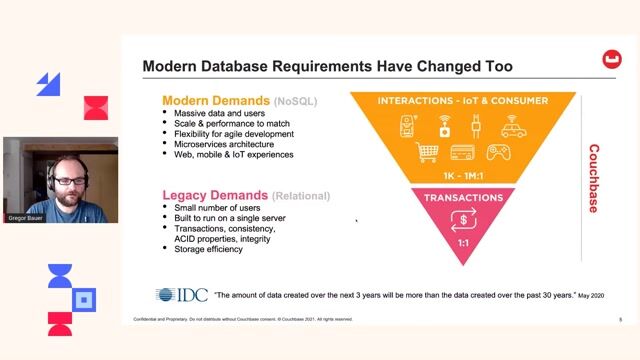
05:00 MIN
Shifting from transactional to interaction-based data models
Tomorrow's cloud data platforms - fully managed database-as-a-service (DBaaS)

02:36 MIN
Understanding document databases and flexible schemas
NoSQL Data Modeling for Front-end Developers

13:32 MIN
Modeling connected data with graph databases
Cyber Sleuth: Finding Hidden Connections in Cyber Data
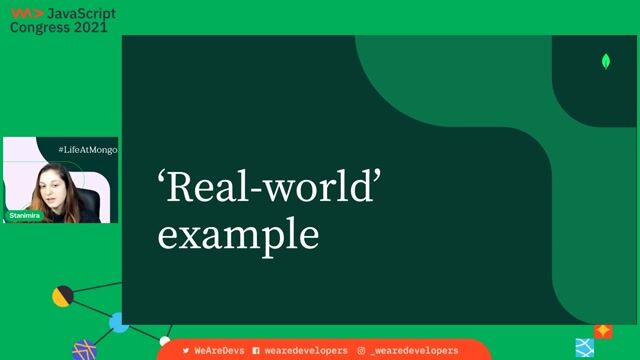
24:19 MIN
Optimizing queries with the extended reference pattern
NoSQL Data Modeling for Front-end Developers
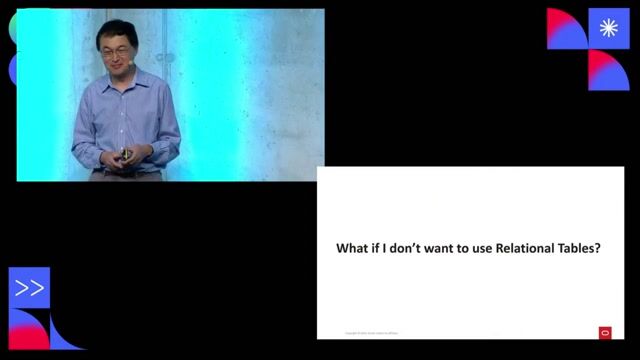
23:53 MIN
Bridging worlds with JSON relational duality views
Crypto-secure Data Management with In-Database Blockchain

25:34 MIN
Key design patterns for distributed database applications
Fault Tolerance and Consistency at Scale: Harnessing the Power of Distributed SQL Databases
Featured Partners
Related Videos
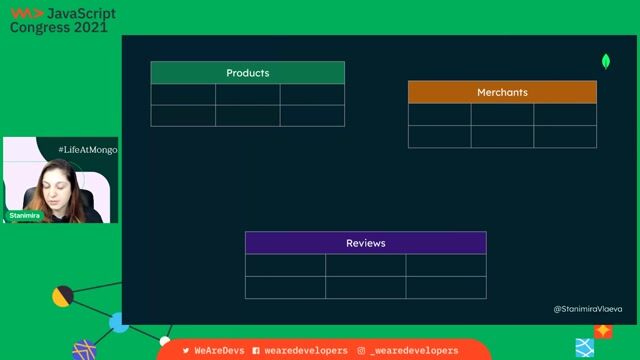 44:51
44:51NoSQL Data Modeling for Front-end Developers
Stanimira Vlaeva
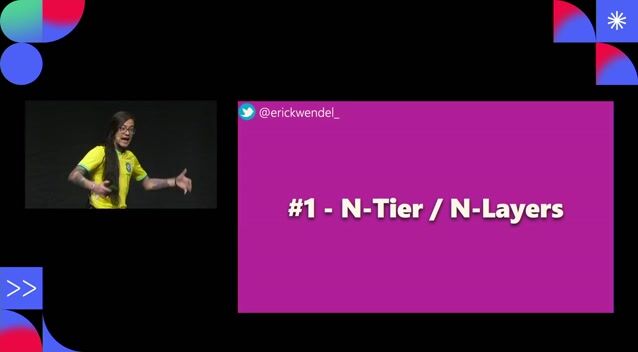 28:13
28:1310 must-know design patterns for JS Devs
Erick Wendel
 18:40
18:40JSON and Beyond
Douglas Crockford
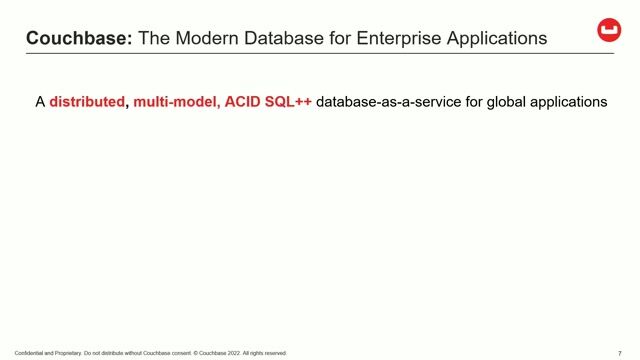 24:22
24:22Database Magic behind 40 Million operations/s
Jürgen Pilz
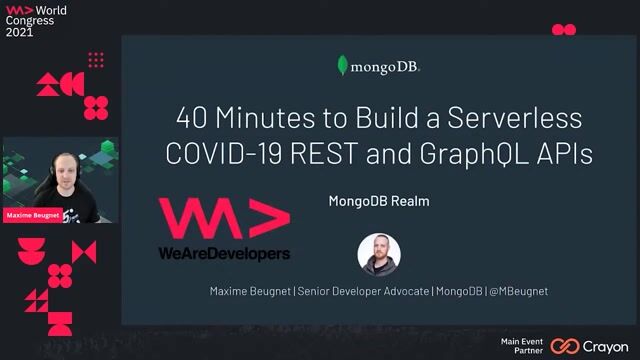 47:16
47:1640 Minutes to Build a Serverless COVID-19 REST and GraphQL APIs
Maxime Beugnet
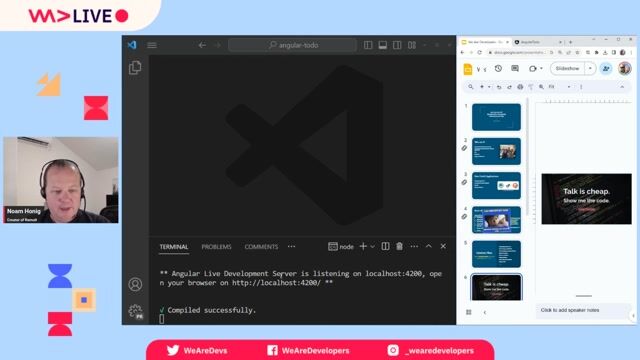 51:04
51:04Meet Your New BFF: Backend to Frontend without the Duct Tape
Noam Honig
 31:08
31:08Maximising Cassandra's Potential: Tips on Schema, Queries, Parallel Access, and Reactive Programming
Hartmut Armbruster
 37:21
37:21The Data Mesh as the end of the Datalake as we know it
Mario Meir-Huber
From learning to earning
Jobs that call for the skills explored in this talk.

Senior Backend Developer (m/f/d)
Laserhub GmbH
Stuttgart, Germany
Remote
€70-80K
Senior
MySQL
Docker
MongoDB
+2


![Senior Software Engineer [TypeScript] (Prisma Postgres)](https://wearedevelopers.imgix.net/company/283ba9dbbab3649de02b9b49e6284fd9/cover/oKWz2s90Z218LE8pFthP.png?w=400&ar=3.55&fit=crop&crop=entropy&auto=compress,format)
Senior Software Engineer [TypeScript] (Prisma Postgres)
Prisma
Remote
Senior
Node.js
TypeScript
PostgreSQL




